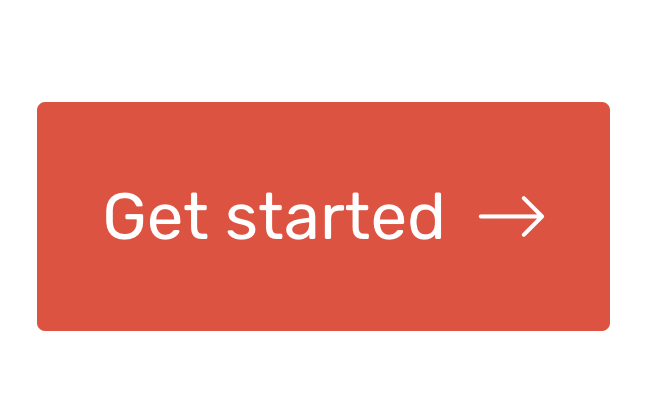Calls-to-Action (CTAs) are indispensable when you want to encourage visitors to move through your marketing funnel on your website, especially when they arrive from diverse channels like social media, email campaigns or search ads.
A well-crafted CTA button maintains this momentum by significantly enhancing user engagement, helping you connect with potential customers.
Use Action Words
The choice of words in your CTAs matters immensely, especially when you want to reach your target audience. Using power words that are clear, concise and compelling can significantly increase your click-through rates. Such persuasive language encourages users to take immediate action while making it clear why it’s in their interest to do so.
Phrases like “Get Started,” “Contact Us,” or “Sign Up” effectively use action-oriented language to drive engagement and conversions.
Designing for High Conversion

The design of your Call-to-Action (CTA) button, including size, placement and color, is pivotal in influencing user interactions and perceptions on your landing page. Each of these elements, when thoughtfully combined, can markedly improve the effectiveness of your CTAs.
Optimal Size
The size of your CTA button should be large enough to be easily noticeable without overwhelming the rest of your webpage's content. A button that is too small may be overlooked, while one that is too large can detract from the overall design and user experience.
The key is finding a balance that ensures visibility and harmonizes with the design aesthetics of your page.
CTA Placement
Your CTA button should be positioned in a spot where users naturally direct their attention, such as within the central viewpoint of a webpage or at the end of a compelling content section.
Placement above the fold (the portion of the web page visible without scrolling) is often recommended to catch immediate attention, but the end of a page can also be effective as well, serving as a call-to-action after viewers absorb your content.
Color Psychology
The color of your CTA should stand out from the background and other elements on your page, but it should also align with your brand and the emotional response you want to evoke. Colors influence perception and behavior – for example, red can evoke urgency while blue can promote trust.
Choosing a color that contrasts well with your site's color scheme while also considering the psychological impact can significantly affect click-through rates.
Add a Secondary CTA Button

Secondary CTAs play a supportive role, offering an alternative action for users not ready for the primary commitment. Strategically placed, they guide users further down the conversion funnel, providing options like "Learn More" or "Subscribe for Updates." This approach with CTA copy keeps engagement alive, nurturing potential leads without overwhelming them with immediate decisions.
Reach Your Target Audience With A/B Testing
Tailoring your CTAs to meet the expectations and needs of your audience can dramatically increase their effectiveness. A/B testing, a method of comparing two versions of a CTA to see which performs better, can lead to more lead generation.
Coupled with personalization, the practice of customizing CTAs based on user behavior or demographic data, makes your calls to action more relevant and appealing.
This approach ensures that your CTA button captures attention and encourages the desired action by resonating with the specific needs and preferences of your target audience.
Show What Makes Your Business Unique
This approach transforms standard CTA’s into compelling invitations that resonate with your target audience's specific needs and interests. By emphasizing your product's unique benefits, such as unparalleled quality, innovative features, or exclusive offers, your CTAs become powerful tools that capture attention and drive engagement.
You could do this through the words in the button or by pairing your CTA with text and/or an image that shows the benefits of your business.
Measuring Your CTA Performance

Utilizing analytics metrics to refine your CTAs ensures continuous improvement and higher efficiency in achieving your marketing objectives.
Harnessing Analytics
The use of analytics is vital in creating an effective call-to-action. By analyzing user interactions and conversions, you can gain insights into what works and what doesn't. This data-driven approach allows for informed decisions, ensuring your CTAs are always optimized for maximum impact.
Tip: You can use Google Analytics for this – and pair it with any number of tools, like SemRush or Ahrefs, to maximize your strategy.
Key Performance Indicators (KPIs) for CTA Success
Identifying and monitoring the right KPIs is crucial in measuring the success of your CTAs. Click-through rates, conversion rates, and the number of leads generated are just a few indicators that can help evaluate performance.
Navigating Common CTA Design Mistakes
Ensuring each CTA has a distinct purpose and is strategically placed can significantly enhance user experience and conversion potential. With the shift towards mobile browsing, optimizing CTAs for mobile users has never been more important.
CTA’s to Avoid
Crafting an effective call-to-action is crucial for engagement. However, some approaches can deter rather than attract. Avoid these:
- Overpromising: "Guaranteed success" can set unrealistic expectations.
- Passive voice: "Offers can be found" weakens your message.
- Lengthy CTAs: Keep it concise and to the point.
Avoiding CTA Overload
Striking the perfect balance in the number of CTAs is essential. Too many can overwhelm users and dilute the message, whereas too few might miss conversion opportunities.
Ensuring Mobile-Friendly Designs
This involves designing buttons that are easily clickable on touch screens and ensuring CTAs are visible without excessive zooming or scrolling, thereby improving accessibility and user engagement on mobile devices.
Integrating CTAs into a Comprehensive Content Strategy

Whether through blog posts, email campaigns or social media platforms, CTAs can be strategically placed to encourage user engagement and drive desired actions.
The key to success lies in crafting a cohesive content approach where CTAs are not only relevant and compelling but also aligned with the content's context and the audience's stage in the buying journey.
By thoughtfully incorporating compelling CTA copy across various content formats, you can create a seamless user experience that consistently encourages visitors to take the desired action.
Turn Visitors into Loyal Customers
A compelling CTA invites website viewers to engage with your services and can make or break the next step they take. If you’d like help with your CTA’s or have any questions about your digital marketing strategy, reach out to us at Eternity. We look forward to it!




